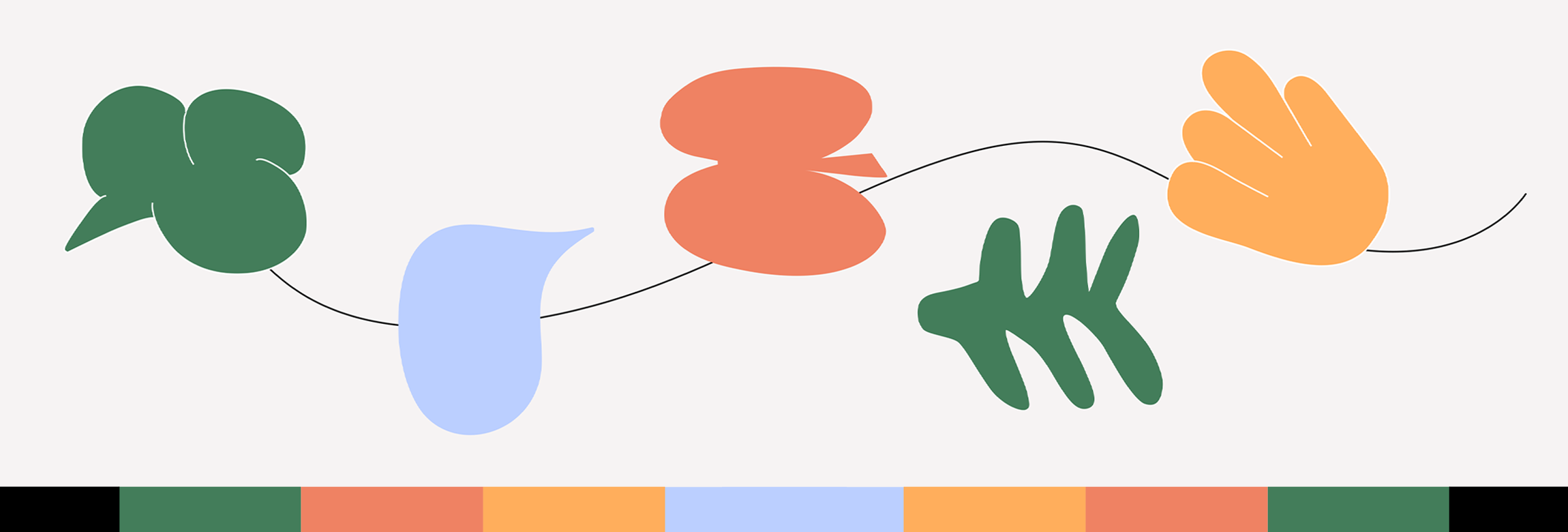
PERLA
TORRES
What if we created collective opportunities for people to grieve in the ways they need? How can our stories care for each other?
Watch our conversation with Perla Torres and read along below.
Video Transcript
Perla Torres directs the Family Network at the Colibrí Center for Human Rights. The network connects families dealing with the ambiguous loss of loved ones who have disappeared while crossing the US-Mexico border through a storytelling podcast, regional comités, collaborative zines and regional get-togethers.
There's this idea that when someone's passed, it's like they're gone — this idea of being gone. But really, it's so beautiful to be able to speak their name, to talk about who they were during their time here, and honoring their life and caring for their story as much as we would have when they were on this earth. I think that is a beautiful form of care.
You realize how everybody's grief is so different.
We Need Each Other’s Stories
A story that a lot of families have really connected with has been the story of a mother here in Tucson actually. Her son migrated to the U.S. from Mexico, and unfortunately, years had gone by before his remains were ever found. She got in contact with Colibrí, had her DNA taken, and years later — it was in 2019 — there was a match to the son.
She has become quite an advocate for missing migrants. She has gone to the border and really renounced the wall and has done a lot of [work]. She's very vocal about what happened to her son and the injustice that has occurred.
In so many of the interviews that we do, we hear families talk about her story and how powerful [it is] and how they had no idea that they could do that. They felt that they had all of these limitations to them. Listening to her and watching her tell her story in such a way that is so powerful has completely inspired so many families, not only to also share their story but to come into their power as well.
We get reports of the missing every single day. This is ongoing. 2020, last year, was a heart wrenching year, and it was one of the deadliest years that we've seen to date in how many bodies were found in the desert and how many reports were made.
Administration after administration has kept these Prevention Through Deterrence laws in place in order to stop this flow of migration, right? But you can't say you value life while deterring migration and in such a dangerous way. Knowing that there will be increased violence, knowing that there will be deaths, and disregard[ing them] because they're not considered homicides, they're considered these unidentified border crossers.
It was [so] beautiful for her story to resonate so much with other families that they then feel empowered to not only share their own story, but also to go and do advocacy work.
Networks for Collective Healing
Before we even really get in contact with the families, they have to go through an intake process to have a case open with Colibrí. So once a DNA kit has been sent, that's when the Family Network steps in to really provide that support — that emotional support — and to provide a wonderful group of families who are willing to bring them in and really hear their story.
So alongside the forensic justice work that Colibrí does — born out of the families' initiative to gather — is the Family Network. The Family Network are these groups of comités in different states across the United States, and they have really transformed and really blossomed into themselves.
A lot of families take these initiatives to gather to talk about this mutual pain of ambiguous loss that they are experiencing — having a loved one be disappeared. Other comités really take on a very activist role, wanting to do some sort of policy change and gather in a much larger scope and attend rallies, where others focus on well-being and really enjoy the comfort of gathering among people who have a very shared similar experience. Having these spaces to convene has been crucial to the health and the wellbeing of the families.
That's really because there's power in unity and there's power in providing them a voice and a voice to not [just] be advocates of their pain, but also to collectively heal.

Ambiguous Loss
Ambiguous loss is a type of loss that is unresolved. It's unresolved grief. So it's almost like frozen grief. It's a type of loss that is very unique to disappearance.That is definitely something that we see throughout the Family Network and throughout the families that we work with.
It pinpoints that grief is not linear, in that we do not process things the same way when we don't understand what there is to process. There is no full circle.
The families are really left wondering “Is my loved one dead? Were they in pain?” Understanding what happened is crucial to really being able to properly heal. We never assume, right? We can never assume that their loved one is deceased or if they are still among the living. So we have to take the approach that we really are guided by what the family believes and where they decide to put this hope. You can imagine how emotionally draining it can be to jump from this new hope to this old hope, from speaking of your loved one as if they were still here and then maybe 15 or 20 minutes later rolling into this idea that they have passed away.
We know that we can't take that pain away from the families. Even when we do make a match, then starts this other type of grieving process where you know that their loved one has been deceased.

Honoring Through Story
Care is such an important foundation to what we do, and part of that is embedded in the protection of the families. How we protect these stories, how we honor these stories, all is a form of care for us.
Out of the Family Network has come out a lot of projects and a lot of different creative projects that have helped families really understand and connect with the pain that they're experiencing — one of those being the historias y recuerdos audio testimony projects. I think that every story has a purpose behind why the story was told, and I think that that's what makes it so unique and so beautiful.
The families are really typically the one to reach out to us, letting us know that they wanna be part of the project. At first, it started off as a couple of families who maybe wanted to talk about and really use it in a form of education. It later took on a different role, to not only have it be for educational purposes, but really used as a way of art and a way of expression for families who might not have that opportunity in other spaces — especially since this is something that they might not be comfortable talking about with other people, even among their own families.
The process of really understanding the family and having them weave their own story has been really amazing. When we do go and do the physical interview, it's really beautiful how — not only how they receive us — but how they receive the interview itself. They bring flowers, they make food, they have pictures of their loved one, that really tie into this really great story, ultimately, where you really feel their presence there.
For example, we did a story where the father had gone missing and he had left behind his wife and his three children, his three girls who are now adult women and are married. I think that story was so beautiful because I don't think that it couldn't have been more joyful. It was amazing to have not only all of his children there, but the wife was there as well. Even in the middle of the interview, they pulled out their iPhone and started FaceTiming other relatives to share funny stories. It really was this organic, beautiful way of honoring him that was incredibly joyful. They started playing the music he liked and we all laughed. It was unlike any other interview I did, and that's where I realized, “Wow, like how different this was compared to the past three stories.” And then they started telling about how sometimes he was really tough with them, and expressing the good and the bad things, 'cause that's what makes us human.
And that's what we're there to do: to humanize these lives and with that comes all of us.

